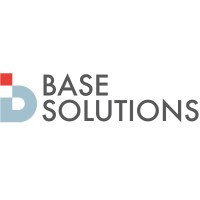IT Support Provider in Vienna Breaks Down Benefits of Cloud Disaster Recovery
Every business faces the risk of data loss or system failure, which can disrupt operations and cause financial strain. As of 2019, 94% of small and medium businesses claim to rely on the cloud for data storage or backup, highlighting the growing reliance on cloud disaster recovery solutions to safeguard critical data.
As digital infrastructure becomes more integral to operations, the need for a robust recovery strategy continues to rise.
A strong Cloud Disaster Recovery (Cloud DR) strategy ensures businesses can recover quickly and minimize disruptions.
As Atul Bhagat, President/CEO at BASE Solutions, emphasizes, “Cloud disaster recovery is more about business resilience. Companies investing in proactive recovery solutions safeguard their operations and maintain customer trust.”
In this blog, a tech support provider in Vienna will explore how Cloud DR protects businesses from potential disasters and provides a reliable strategy for maintaining continuity.
What is Cloud Disaster Recovery and How Does it Work?
Cloud disaster recovery (Cloud DR) is a solution that allows businesses to back up and recover their IT infrastructure using the cloud.
Unlike traditional disaster recovery systems that rely on physical storage and local backups, Cloud DR stores data in secure, remote data centers, ensuring protection even if your primary systems fail.
This solution works by continuously replicating data and applications from your business’s servers to the cloud.
In the event of a disaster, whether it’s a server failure or a cyber attack, your business can quickly restore its systems from the cloud and continue operations with minimal downtime.
Cloud DR offers significant advantages over traditional methods. With cloud-based solutions, there’s no need to maintain expensive physical infrastructure or worry about maintaining off-site backup facilities. This makes it not only a more cost-effective option but also more reliable, with automatic failover and recovery processes.
Key Benefits of Using Cloud-Based Disaster Recovery
According to CloudSecureTech, 75% of SMBs lack a disaster recovery plan, leaving them vulnerable to disruptions. Utilizing cloud-based disaster recovery offers several benefits that can be transformative for your business.
Flexibility & Scalability: Adjust backup and recovery needs as your business grows or downsizes.
Minimal Downtime & Fast Recovery: Replicated data enables rapid restoration, reducing operational disruptions.
Cost Savings: Avoid high upfront infrastructure costs. Cloud disaster recovery saves you costs on RTO (Recovery Time Objective) and RPO (Recovery Point Objective). Pay only for what you use.
Cloud Data Recovery: Secure, fast access to critical data without manual intervention.
Customizable Recovery Models: Choose from basic backups to full replication, tailored to business needs.
What Does a Cloud Disaster Recovery Plan Include?
A cloud disaster recovery plan is essential for ensuring that your business is prepared for unexpected events. This plan outlines the steps needed to restore data, systems, and applications in the event of a disaster.
Key components of a disaster recovery plan for cloud include:
Recovery Point Objective (RPO): This refers to the amount of data your business is willing to lose in the event of a disaster. A shorter RPO means less data loss and more frequent backups.
Recovery Time Objective (RTO): This is the target time frame in which your business aims to restore its systems after a disaster. The faster the recovery, the less operational downtime your business will face.
Cloud DR Tools: These tools automate the recovery process, ensuring systems can be restored quickly and without human intervention. Tools such as automated backup solutions and cloud-based monitoring are crucial to the success of a Cloud DR plan.
Putting these components in place, you can create a robust cloud recovery strategy that reduces downtime and increases data protection.
Steps to Implement Cloud Disaster Recovery for Your Business

Implementing cloud disaster recovery can be a straightforward process if done correctly. Here are the essential steps to get started:
Conduct a Risk Assessment: The first step in any disaster recovery plan is understanding your business’s risks. Identify potential threats, such as system failures, cyberattacks, or natural disasters, and assess their potential impact.
Select a Cloud Recovery Solution: Choose a cloud-based disaster recovery provider that aligns with your business needs. Ensure the solution offers scalable options, easy integration, and a high level of security.
Set Up Automated Backups: Automate your backup processes to ensure data is consistently backed up without manual intervention. This ensures your business is always prepared for unexpected events.
Test and Maintain the Cloud DR System: Regularly test your Cloud DR system to ensure that it works efficiently. Regular tests can help identify any weaknesses and ensure that recovery times meet your business goals.
Train Your Team: It’s essential to train your employees to handle disaster recovery procedures. Having a team that knows what to do when disaster strikes can significantly reduce recovery time and minimize confusion.
Cloud Disaster Recovery vs Traditional Methods: Which is Better?
When comparing cloud disaster recovery with traditional methods, there are clear advantages to using the cloud.
Here’s a breakdown of the key differences:
Cost: Traditional disaster recovery requires costly physical infrastructure, such as backup servers and storage systems. Cloud DR offers a pay-as-you-go model, eliminating the need for capital investment in hardware.
Scalability: Cloud-based solutions can be easily scaled up or down depending on your business needs, while traditional methods may require purchasing additional equipment.
Disaster Preparedness: Cloud DR offers better protection and quicker recovery times. In a disaster, your business can restore data and systems from the cloud much faster than traditional methods.
Given these advantages, cloud disaster recovery is often the more effective and efficient choice for businesses.
How Businesses Are Using Cloud Disaster Recovery Today
Many businesses across industries now rely on cloud disaster recovery to protect their data and stay operational.
SMBs in retail and healthcare use cloud-based disaster recovery to maintain compliance and secure sensitive data.
A strong example is Thomson Reuters. One of its business units, ONESOURCE GTM, had a manual, resource-heavy recovery process before 2020. After migrating to AWS-based cloud disaster recovery, the company automated its response, cut downtime, and improved recovery times across 300 DR servers.
Real-world results like these show the clear value of having a fast, cost-efficient cloud disaster recovery plan in place.
How to Choose the Best Cloud Disaster Recovery Provider for Your Business
Selecting the right cloud disaster recovery provider is crucial to your business’s continuity. Here’s what to look for when choosing a provider:
Security: Ensure the provider offers robust security measures, such as encryption and compliance with standards like HIPAA and GDPR.
Scalability: Your business may grow over time, so choose a provider that can scale with your needs.
Support: Look for a provider that offers 24/7 customer support to ensure assistance is available in an emergency.
Why Disaster Recovery Testing Matters and the Methods You Can Use
Even the best disaster recovery plan can fail if it isn’t tested properly. Regular testing ensures your cloud recovery processes work when needed.
Below is a breakdown of the most common testing methods, what they involve, and when they’re typically used.
| Testing Method | Description | When to Use It |
| Checklist Testing | Review documentation, recovery plans, contact lists, and procedures. | Best for periodic reviews or during plan updates. |
| Tabletop Exercise | Key team members walk through a simulated scenario to assess roles and actions. | Ideal for identifying communication or coordination issues. |
| Simulation Testing | Simulates a specific disaster scenario without disrupting operations. | Useful for validating recovery logic and internal dependencies. |
| Parallel Testing | Systems are restored in a separate environment to validate recovery time. | Helps measure actual RTO/RPO without affecting production systems. |
| Full Interruption Testing | Real recovery from backup by shutting down production systems. | Rarely used; best for validating full failover in non-critical periods. |
Protect Your Cloud Infrastructure with the Leading Tech Support Provider in Vienna
Cloud disaster recovery is an essential part of modern business continuity planning. It offers flexibility, scalability, and cost savings while ensuring your data and systems are protected in the event of a disaster.
Businesses that leverage cloud-based DR are better prepared to minimize downtime and maintain operations, no matter what challenges arise.
As one of the most trusted IT support providers in Vienna, BASE Solutions has helped countless businesses recover swiftly and efficiently through our industry-leading disaster recovery solutions.
With a proven track record of protecting critical data, we provide businesses with the tools they need for seamless recovery.
Ready to secure your business’s future? Contact us today to schedule a consultation and discover how we can protect your data and systems.




